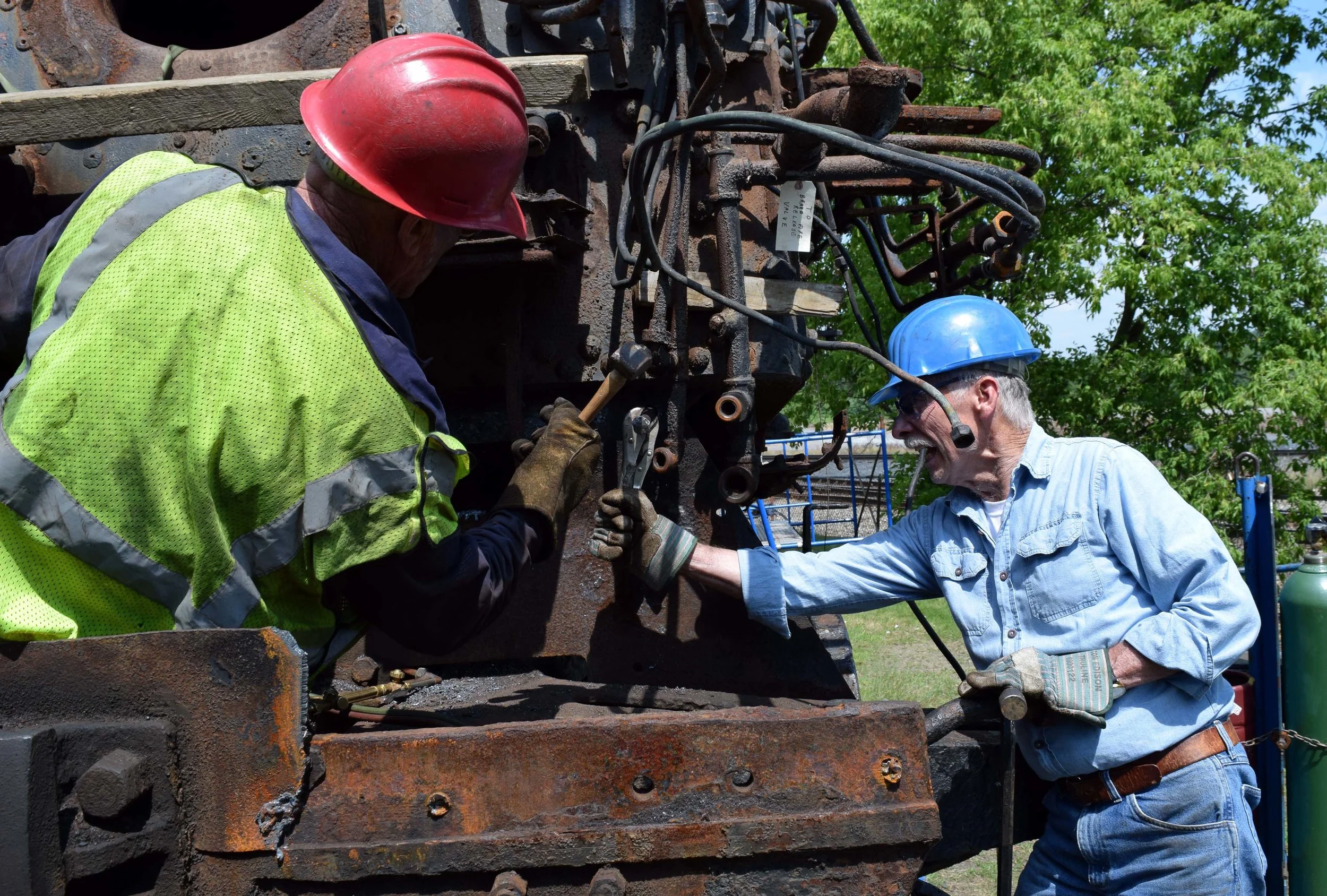New England Steam Corporation was founded in 2013 to preserve and restore Maine Central steam locomotive #470 to operation. This is the last mainline passenger steam locomotive in New England, a monument to the region's growth and transportation history. Without a rebuild, the effects of time, weather, and vandalism would continue unabated.
In addition to the preservation of the locomotive itself, NESCo aims to preserve and revive the skills necessary to maintain a steam locomotive. Through research and on-the-job training with artisans and craftsmen, NESCo’s volunteers will learn and pass along the trades of riveting, boilermaking, pipefitting, and more that are otherwise relegated to history books.
Despite over 60 years of outdoor display, #470's boiler and firebox offer the majority of the material needed for a restored operation. The locomotive was moved from its longtime display location in Waterville to Ellsworth, Maine in the summer of 2016 to begin its restoration.
Once restoration is complete, the Downeast Scenic Railroad will be #470's permanent home for maintenance and operation.
Operating a mainline steam locomotive in Maine between spring and summer will pump hundreds of thousands of dollars into the Maine economy. Motels, restaurants, service stations, retail shops, and other independent small businesses will see a large influx of business along the locomotive's advertised route. Mainline steam excursion trains can earn as much as $60,000 on a single round trip, allowing #470 to fund its own ongoing maintenance through continued operation. To learn more about our plans for the future, you can read NESCo’s formal business plan.
We rebuild at the speed of money, which comes from our donation and grant base. At our current rate of fundraising, we anticipate having a running locomotive around 2030, but if funding levels increase, that timeline could be much sooner. To expedite the restoration process, visit our “Get Involved” page to learn how you (or your company) can become a donor or sponsor.

